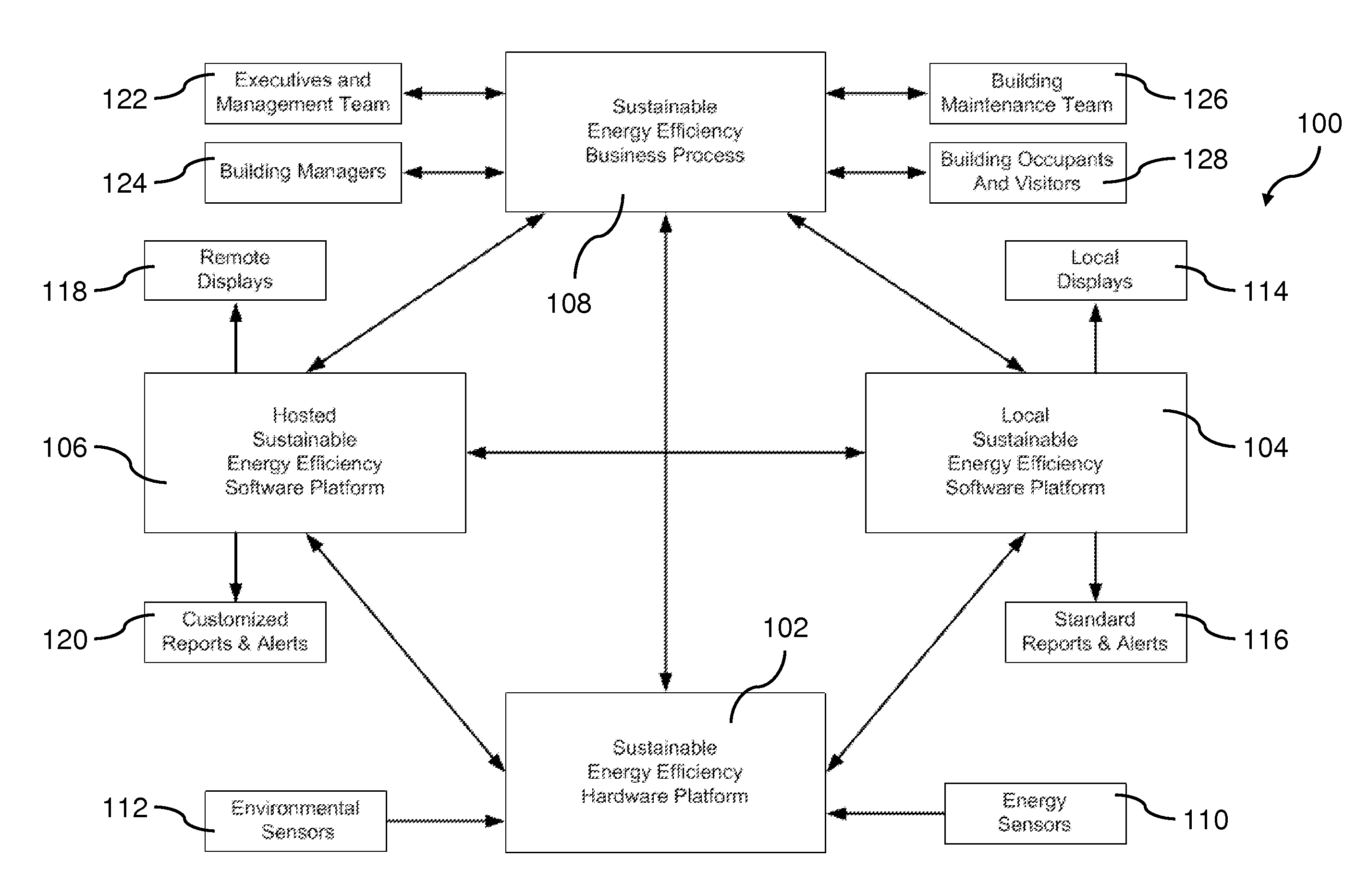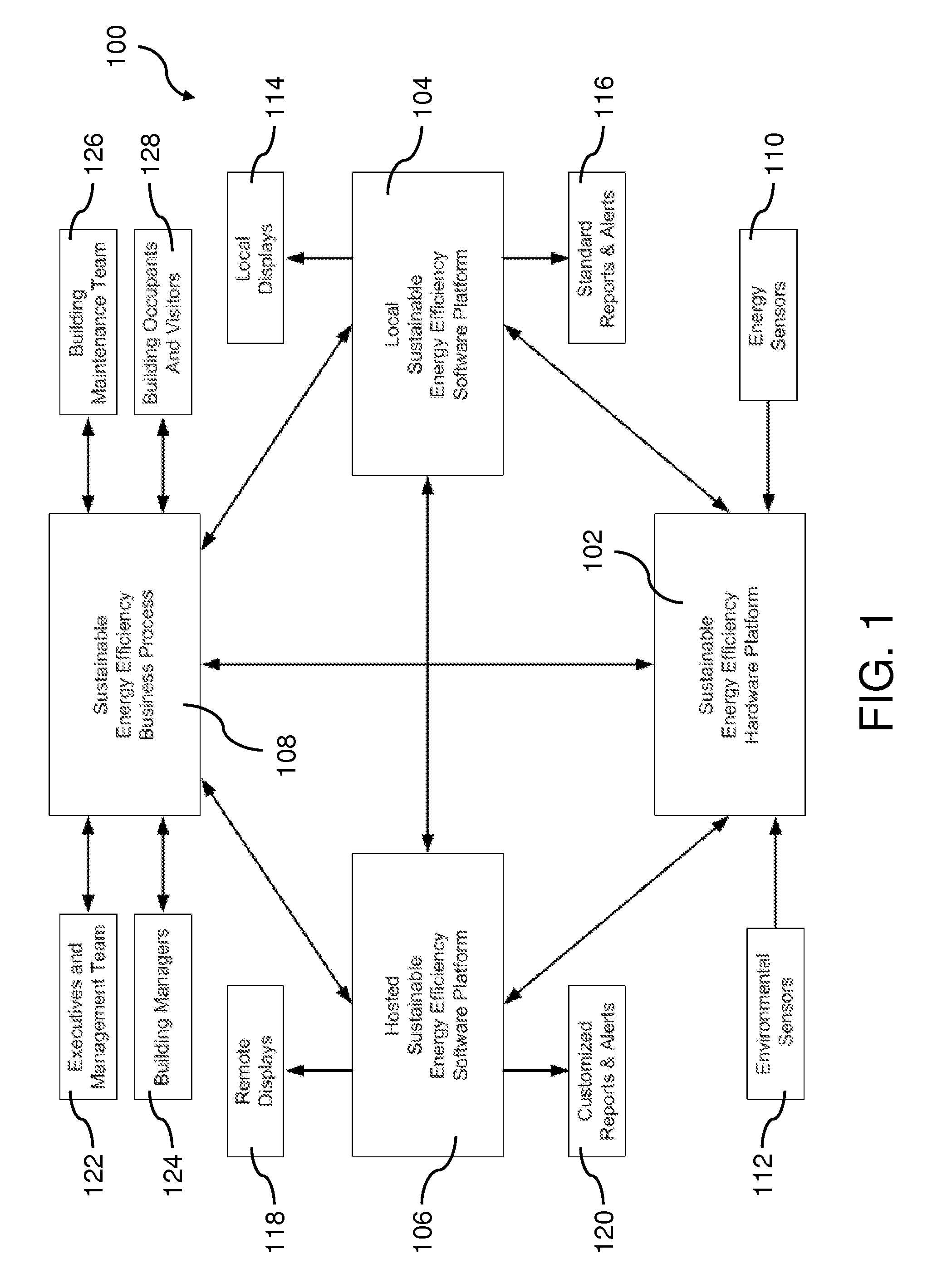Sustainable energy efficiency management system
a management system and energy efficiency technology, applied in non-electric variable control, process and machine control, instruments, etc., can solve the problems of lack of supervisory energy efficiency performance reports, limited effectiveness of sustainable energy efficiency management, and little useful information by which consumers can manage their energy use, and achieve the effect of stable automated regression analysis
- Summary
- Abstract
- Description
- Claims
- Application Information
AI Technical Summary
Benefits of technology
Problems solved by technology
Method used
Image
Examples
Embodiment Construction
[0063]While the concepts of the present disclosure are susceptible to various modifications and alternative forms, specific embodiments thereof have been shown by way of example in the drawings and will herein be described in detail. It should be understood, however, that there is no intent to limit the concepts of the present disclosure to the particular forms disclosed, but on the contrary, the intention is to cover all modifications, equivalents, and alternatives consistent with the present disclosure and the appended claims.
[0064]In the following description, numerous specific details such as logic implementations, resource partitioning / sharing / duplication implementations, types and interrelationships of system components, and logic partitioning / integration choices are set forth in order to provide a more thorough understanding of the present disclosure. It will be appreciated by one skilled in the art, however, that embodiments of the disclosure may be practiced without such sp...
PUM
 Login to View More
Login to View More Abstract
Description
Claims
Application Information
 Login to View More
Login to View More - R&D
- Intellectual Property
- Life Sciences
- Materials
- Tech Scout
- Unparalleled Data Quality
- Higher Quality Content
- 60% Fewer Hallucinations
Browse by: Latest US Patents, China's latest patents, Technical Efficacy Thesaurus, Application Domain, Technology Topic, Popular Technical Reports.
© 2025 PatSnap. All rights reserved.Legal|Privacy policy|Modern Slavery Act Transparency Statement|Sitemap|About US| Contact US: help@patsnap.com



